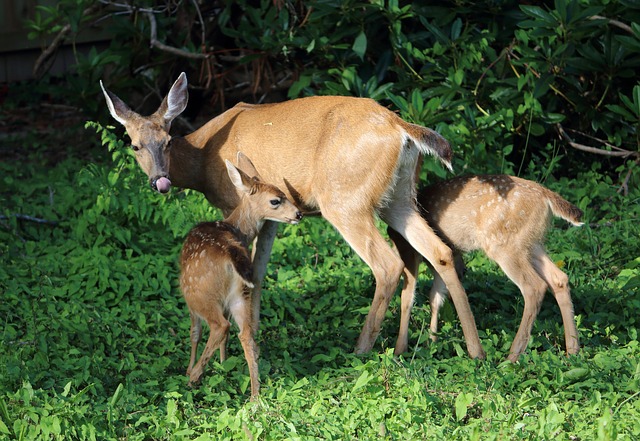
March 13th is the start of National Wildlife Week. Across Kansas, including the KCK/KCMO metro, wildlife is on the increase. Wildlife from deer, to black bears, mountain lions, elk, otters, to even armadillos have spread throughout Kansas. In some cases, the uptick in new wildlife numbers are by design, through different protection measures. In other cases, due to changes in migration patterns. For example, the state of Kansas went nearly 100 years, until 2007, without any mountain lion sightings. But because they lived in nearby states, more mountain lions started coming to our state over the last 15 years, due in part to rising population numbers. Male mountain lions will kill their young, so as populations have grown, more young have fled their packs, and came to Kansas.
Due to these wildlife increases, it is not as uncommon as it once was to encounter other animals while out and about with your pets. It’s important to know what to do to keep you, your pet, and the wildlife safe.
How to Keep your Pet Safe Around Wildlife Away From the Home
Keep Your Pet on a Leash When Walking
Most common pet and wildlife interactions take place when the pet is chasing after the other animal. The most important thing to do when walking or hiking with your pet is keep it leashed. In situations where your pet may spot wildlife, the leash gives you control. When encountering wildlife, a pet off its leash may act aggressively, putting everyone in danger. On the flip side, a pet might become frightened and try to run away.
What to do When You Encounter Wildlife
If you see another animal while walking or hiking, keep it from approaching you and your pet by making a lot of noise. When I walk in the woods, I try to crunch leaves and step on branches as a way to “announce” that I’m in the area. Wildlife will typically avoid you and your pet if they know you’re coming. If an animal does try to approach you, try to make yourself as big as possible and make clear, loud and direct noises that should scare it away. To get around wildlife, create a path that is large enough to keep enough distance between you and the animal.
How to Keep your Pet Safe Around Wildlife Around the Home
Eliminate Potential Food Sources
Even fenced in yards aren’t immune from wildlife, like gophers that can crawl under the fence. There are a number of things that attract wildlife to our yards, but the biggest is food. Keep the area around your home clean from food and pet waste, which are both common scents wildlife will pick up on that they will want to investigate. Keep your garbage secure, if possible indoors in the garage. Don’t feed your pets outside, because kibble and other pet food are irresistible to wildlife.
Don’t Leave Your Pets Unattended Outside for Long Periods
When you let your pet outside, make sure a family member is there with the pet. A rabbit outside my parent’s house met its untimely demise when they let their dog outside and mistook the rabbit for a chew toy. The clean up was less than desirable. In some cases, your pet might not have the advantage with possible wildlife. It’s most important to go outside with your pet during peak hours when wildlife are most active, in the early morning hours, or late at night.
It’s rare for pets to be injured by wildlife. But taking these measures will ensure your pet doesn’t have to interact with wildlife and keep everyone safe. If, however, you suspect that your pet has had contact with another animal, make an appointment to see us immediately, so that we can catch any potential illness or disease your pet might have picked up from the other animal.


